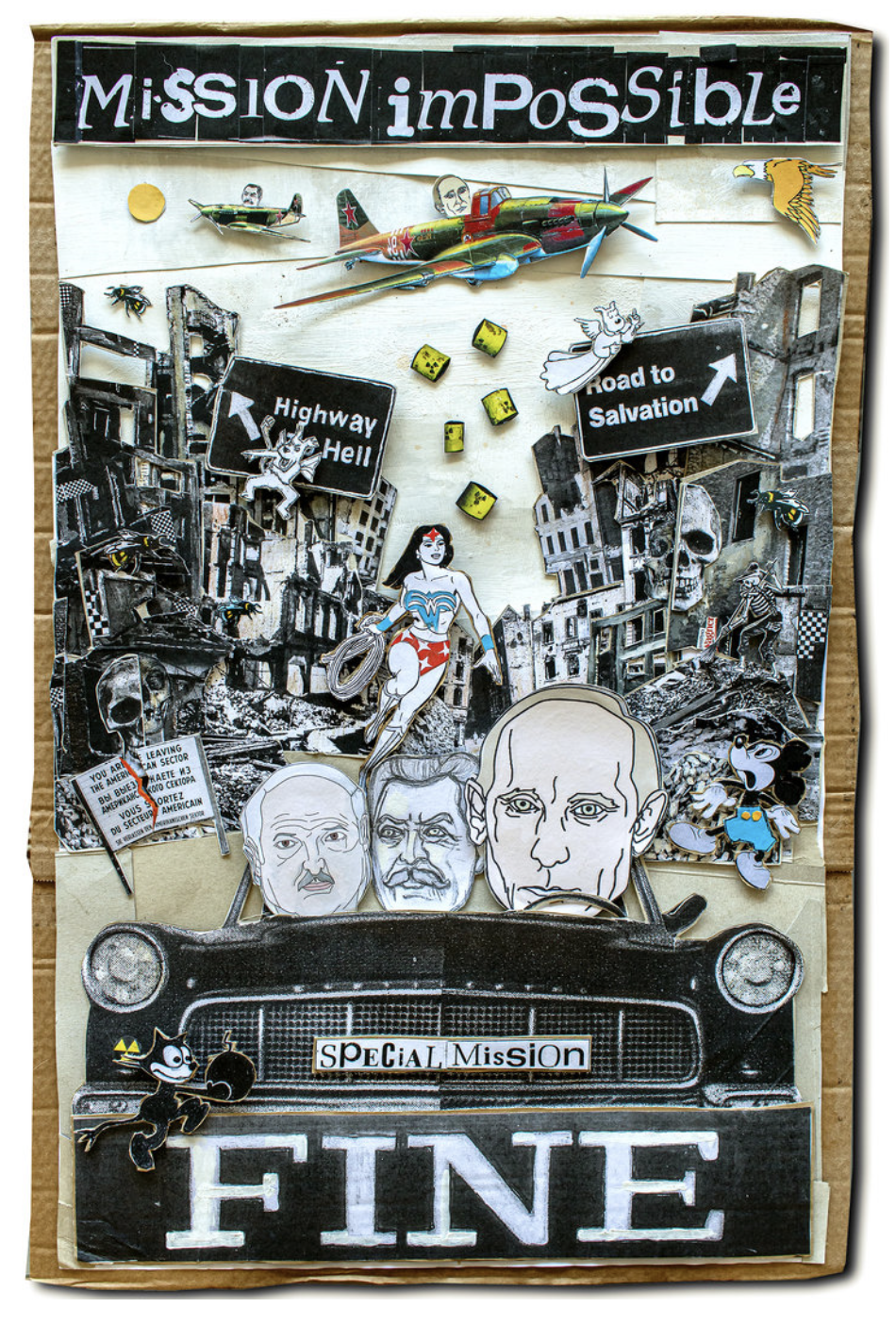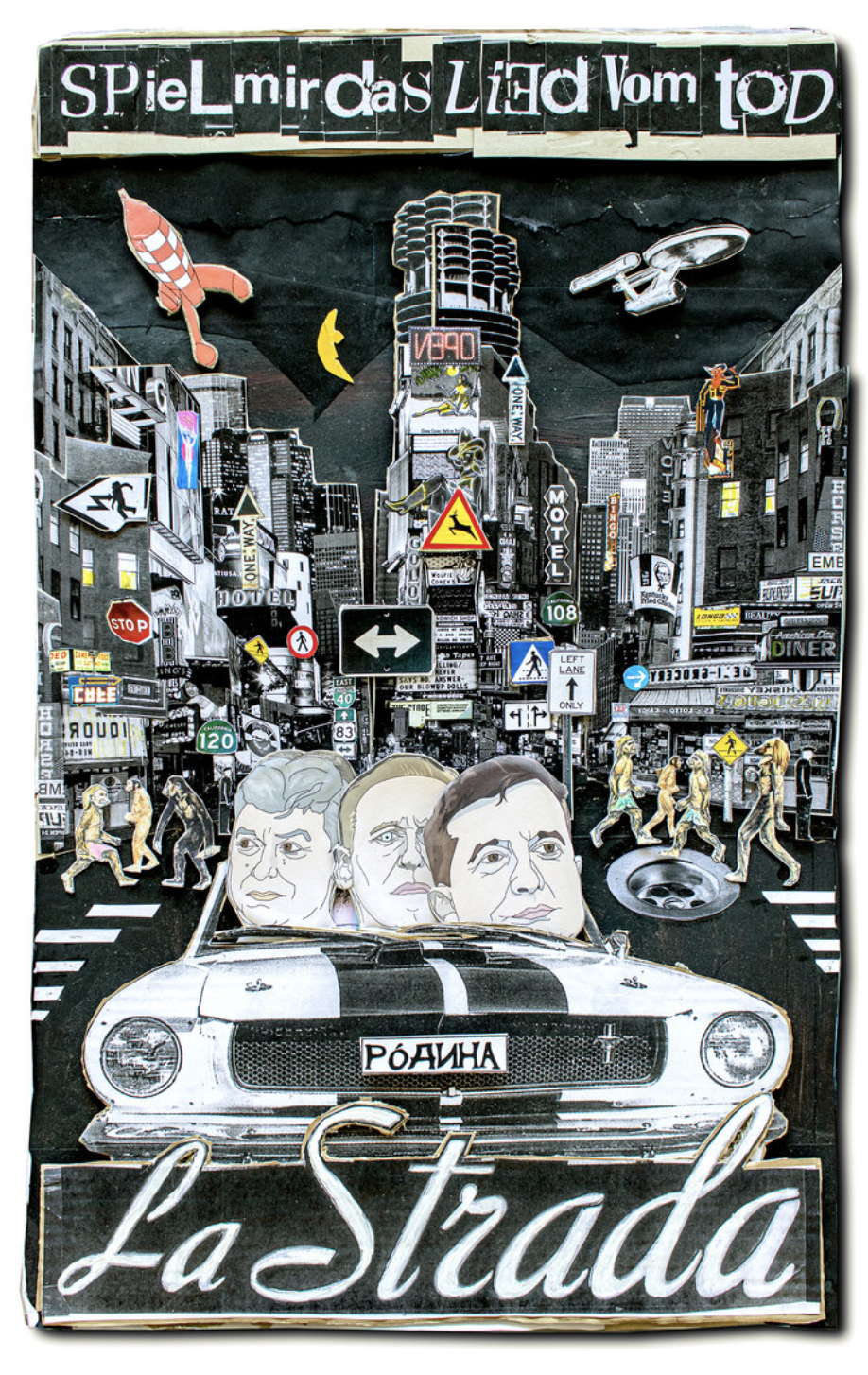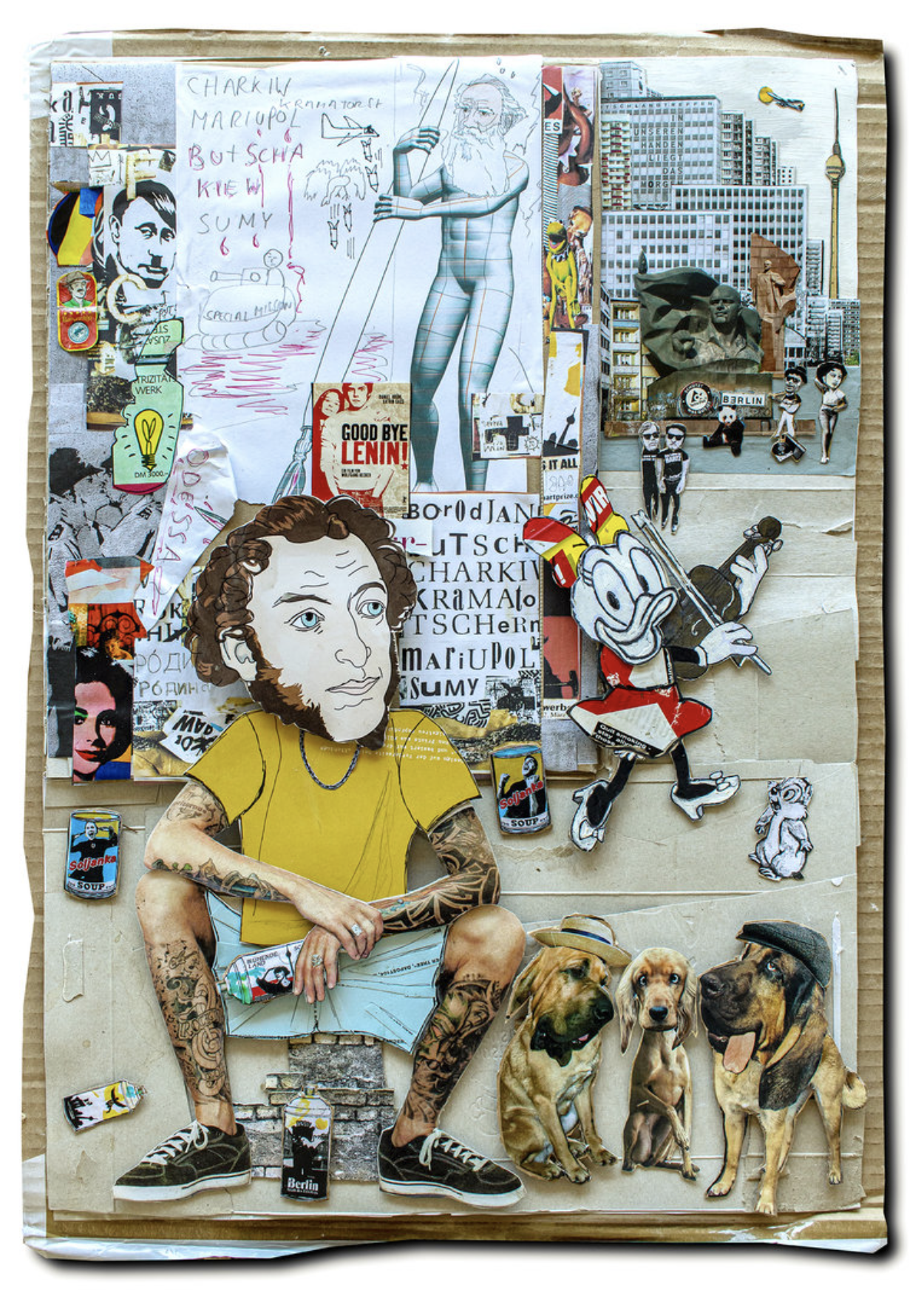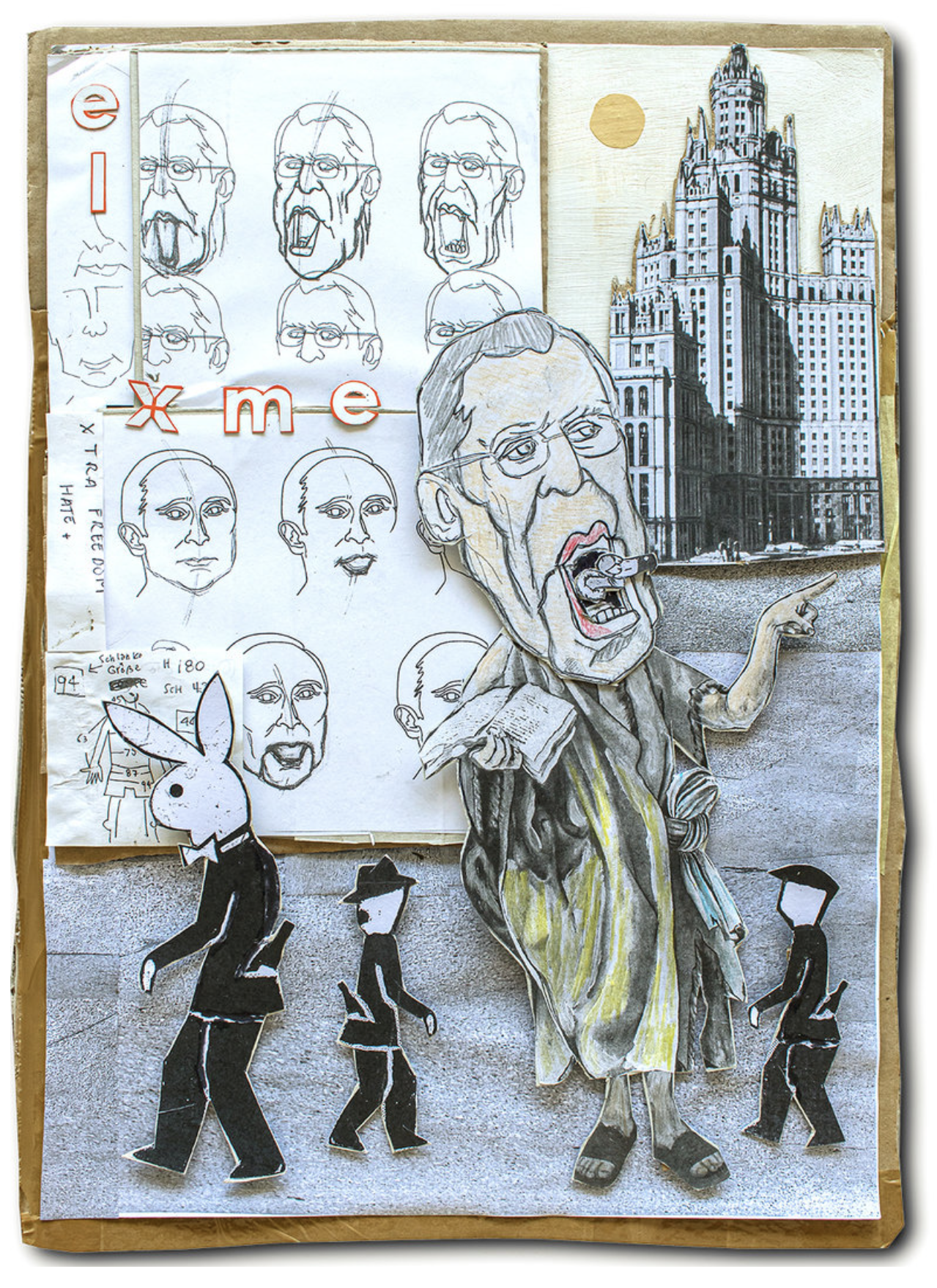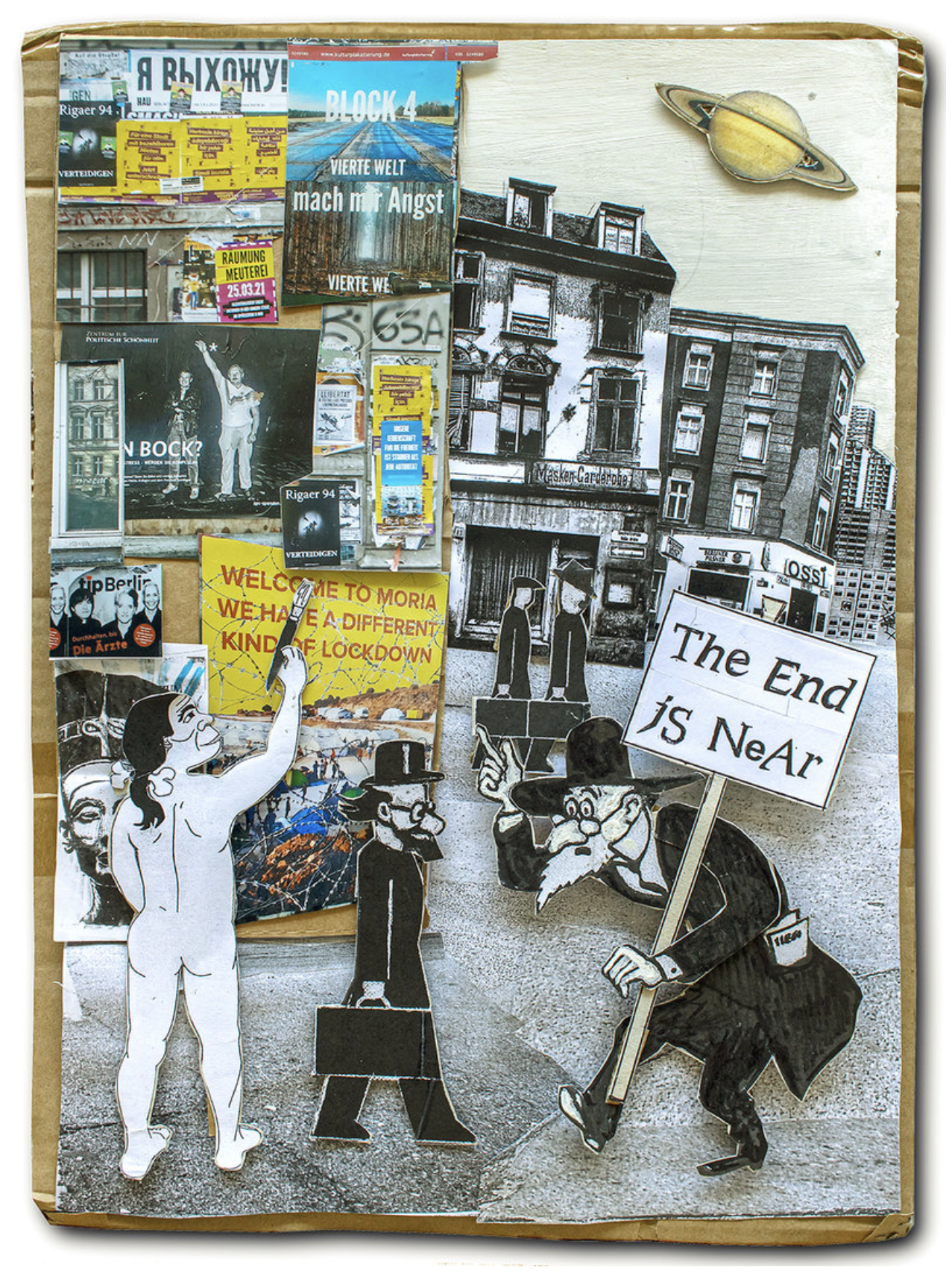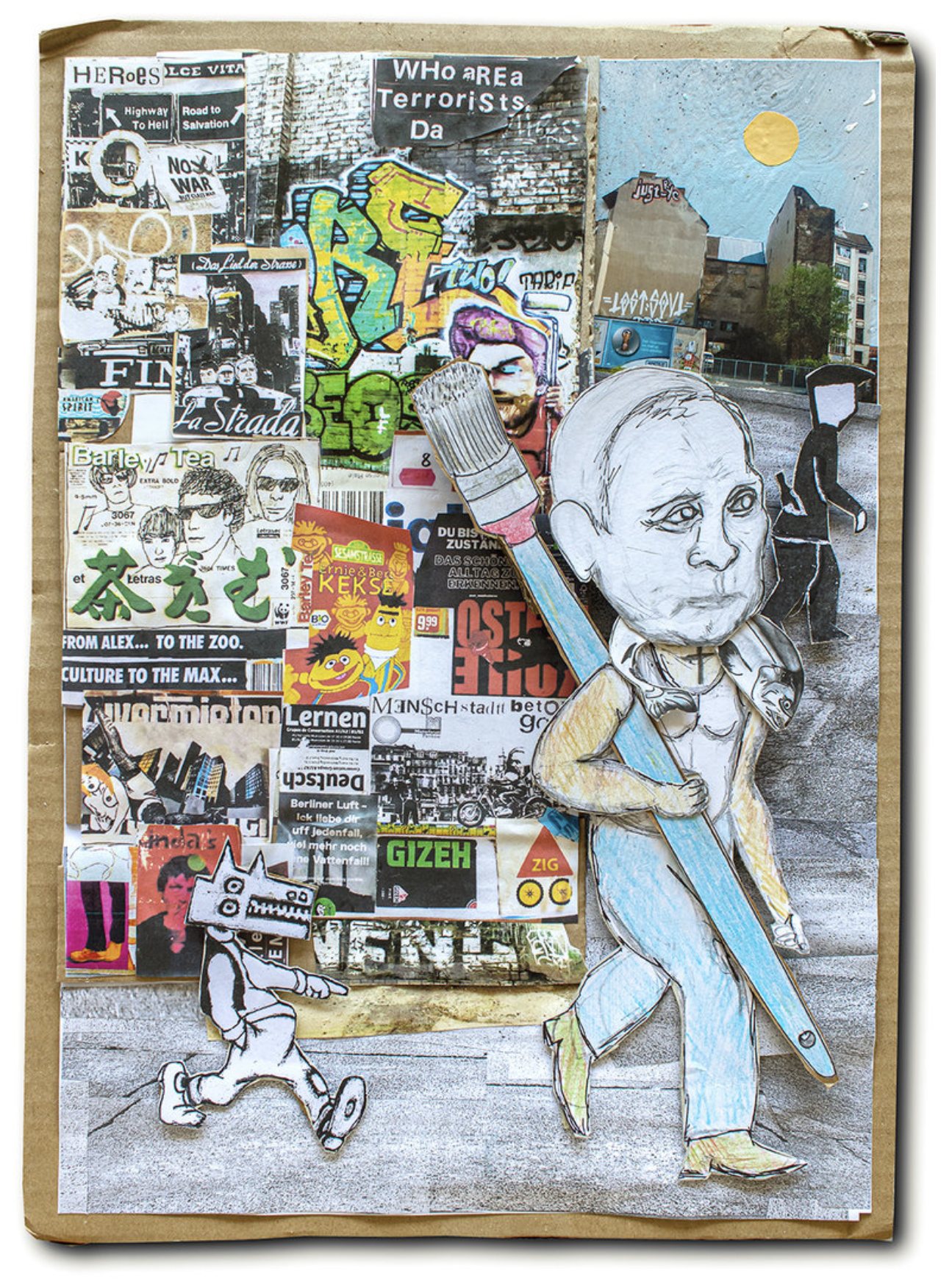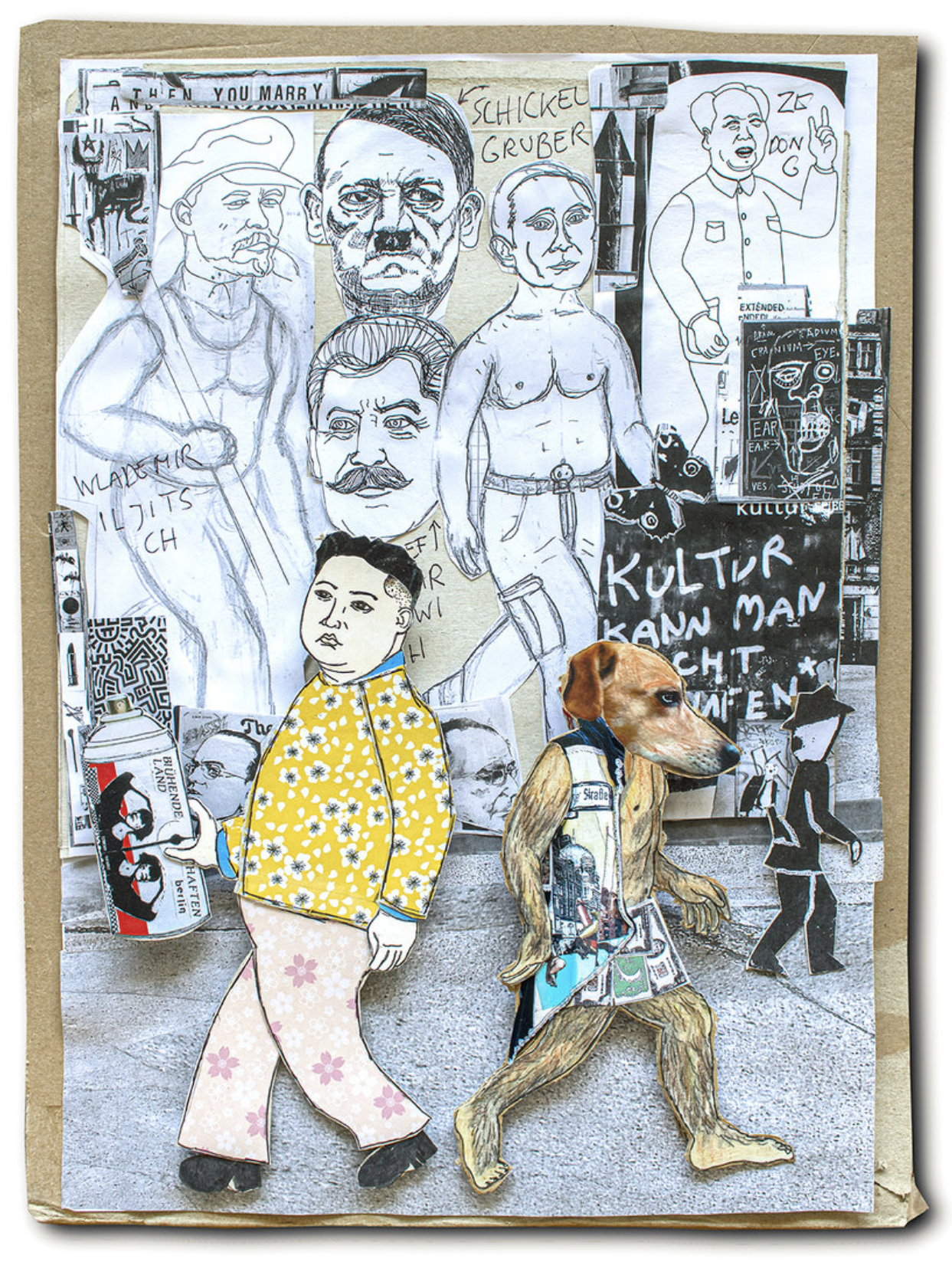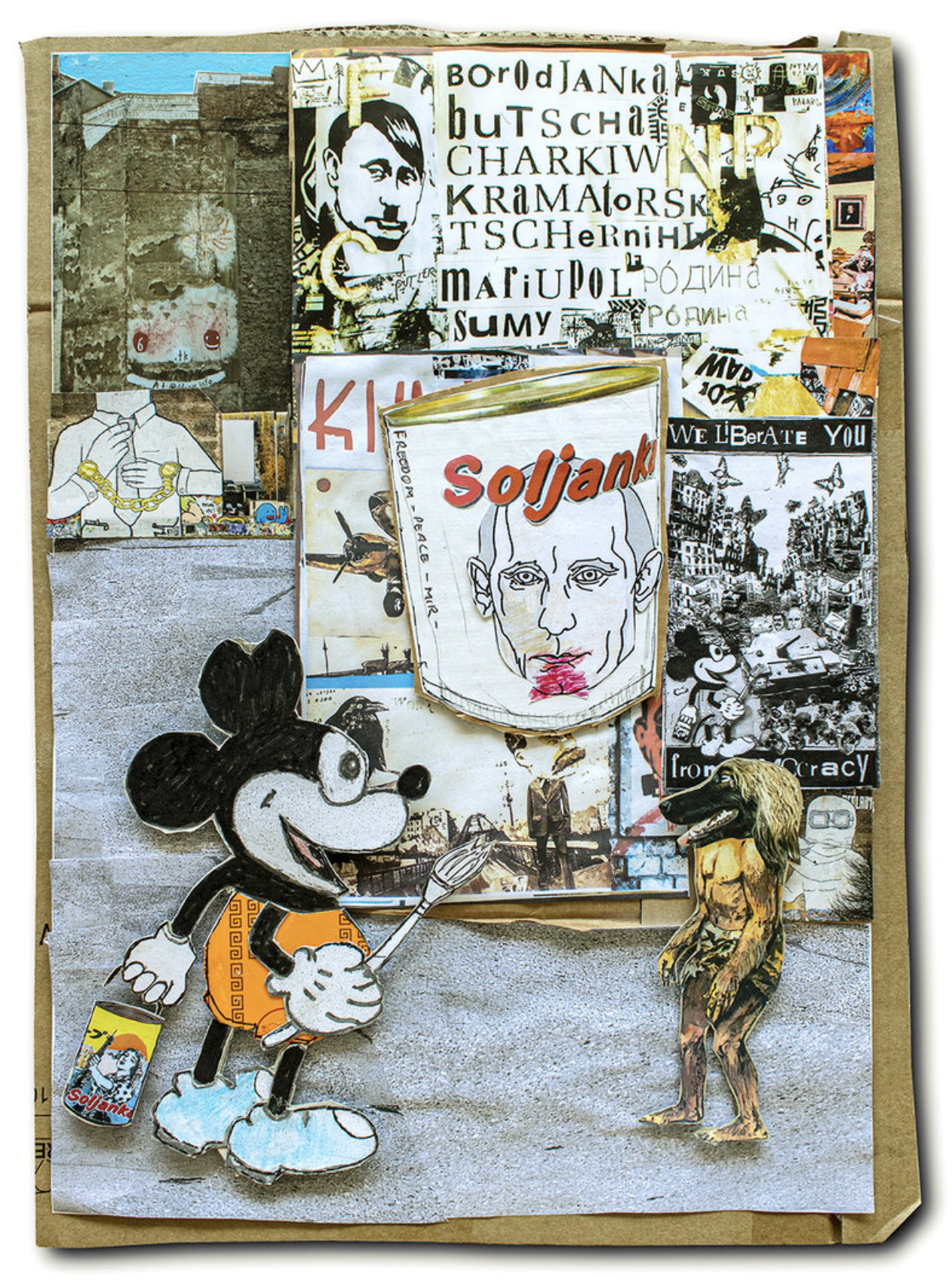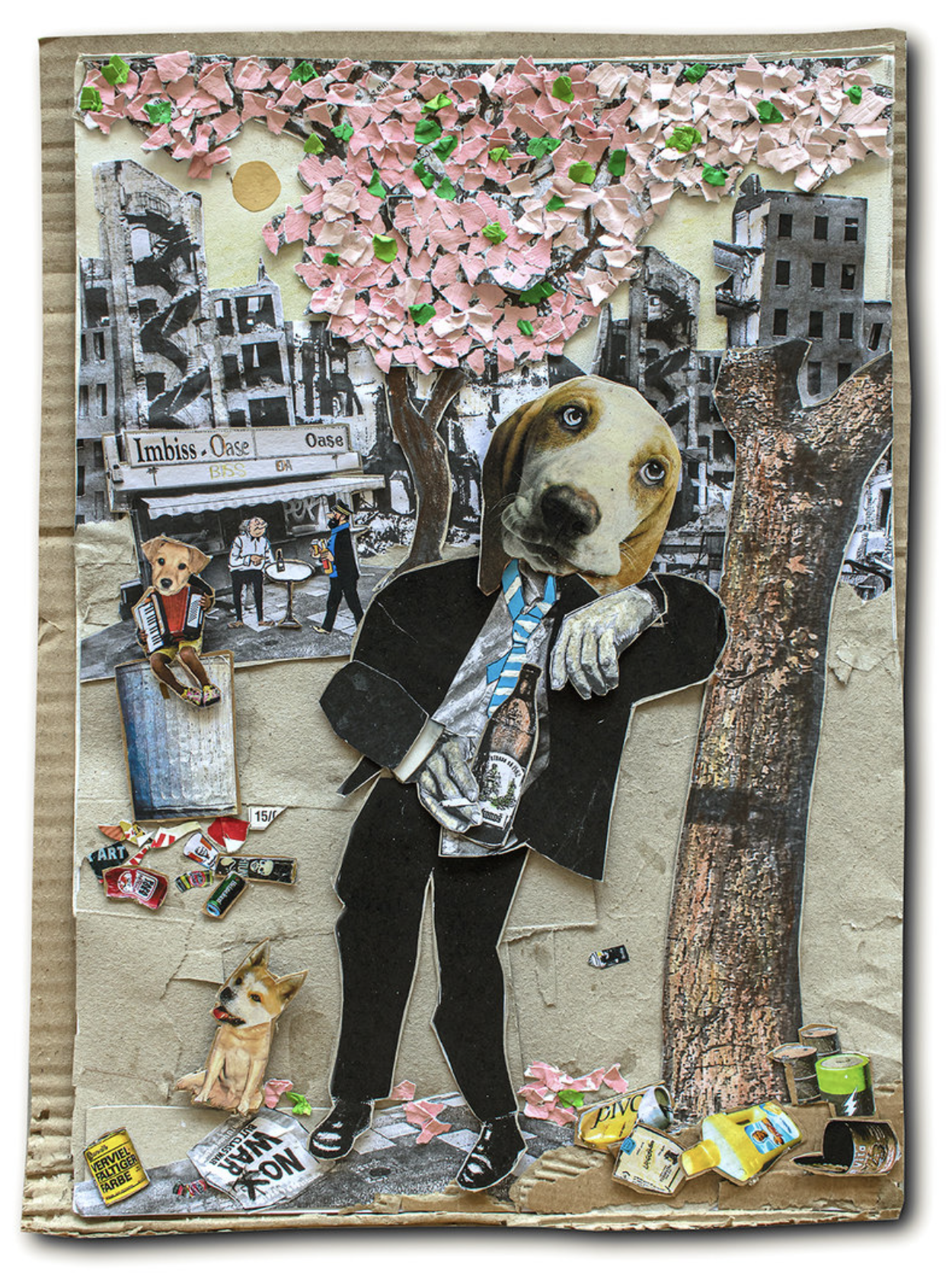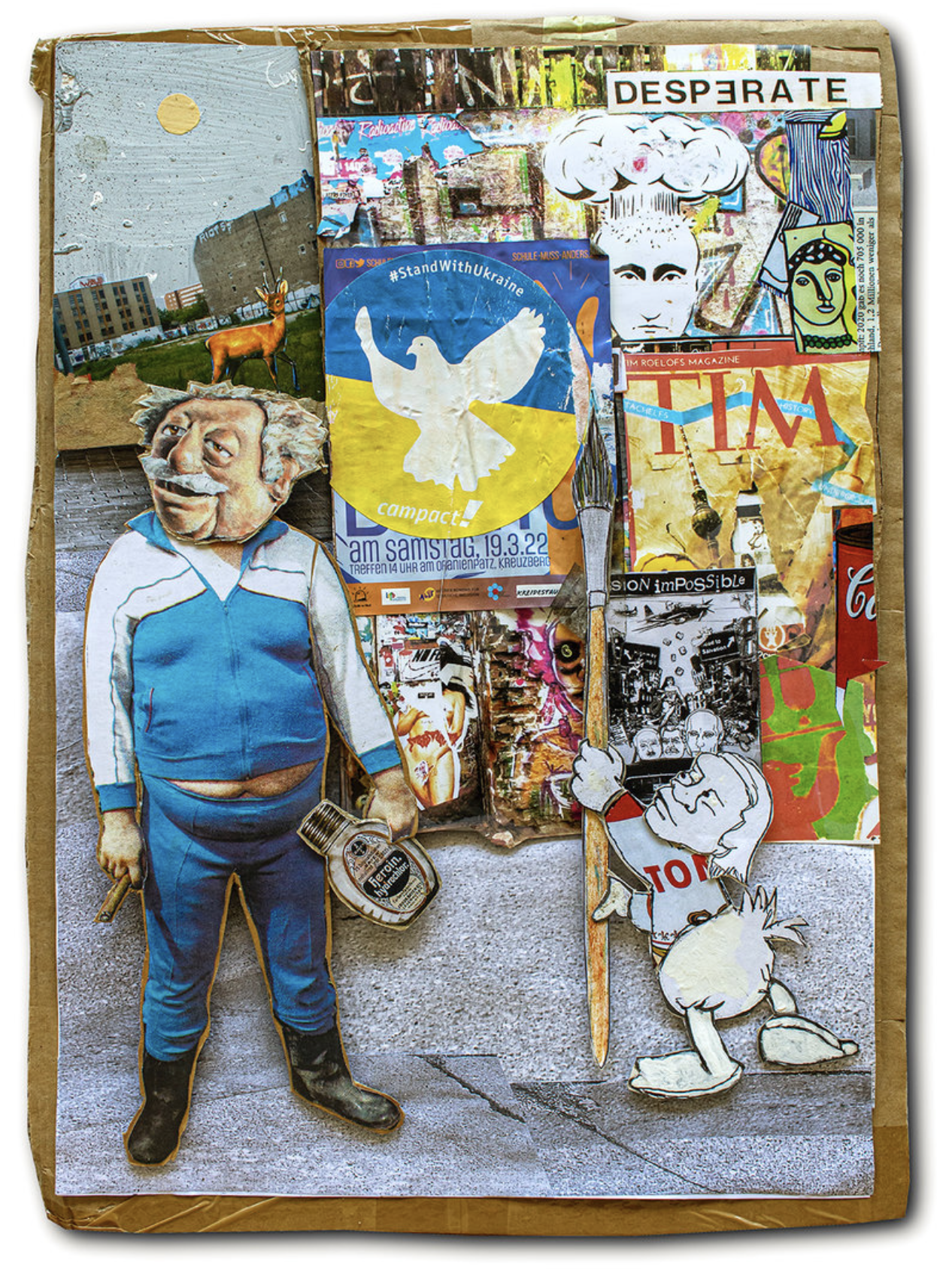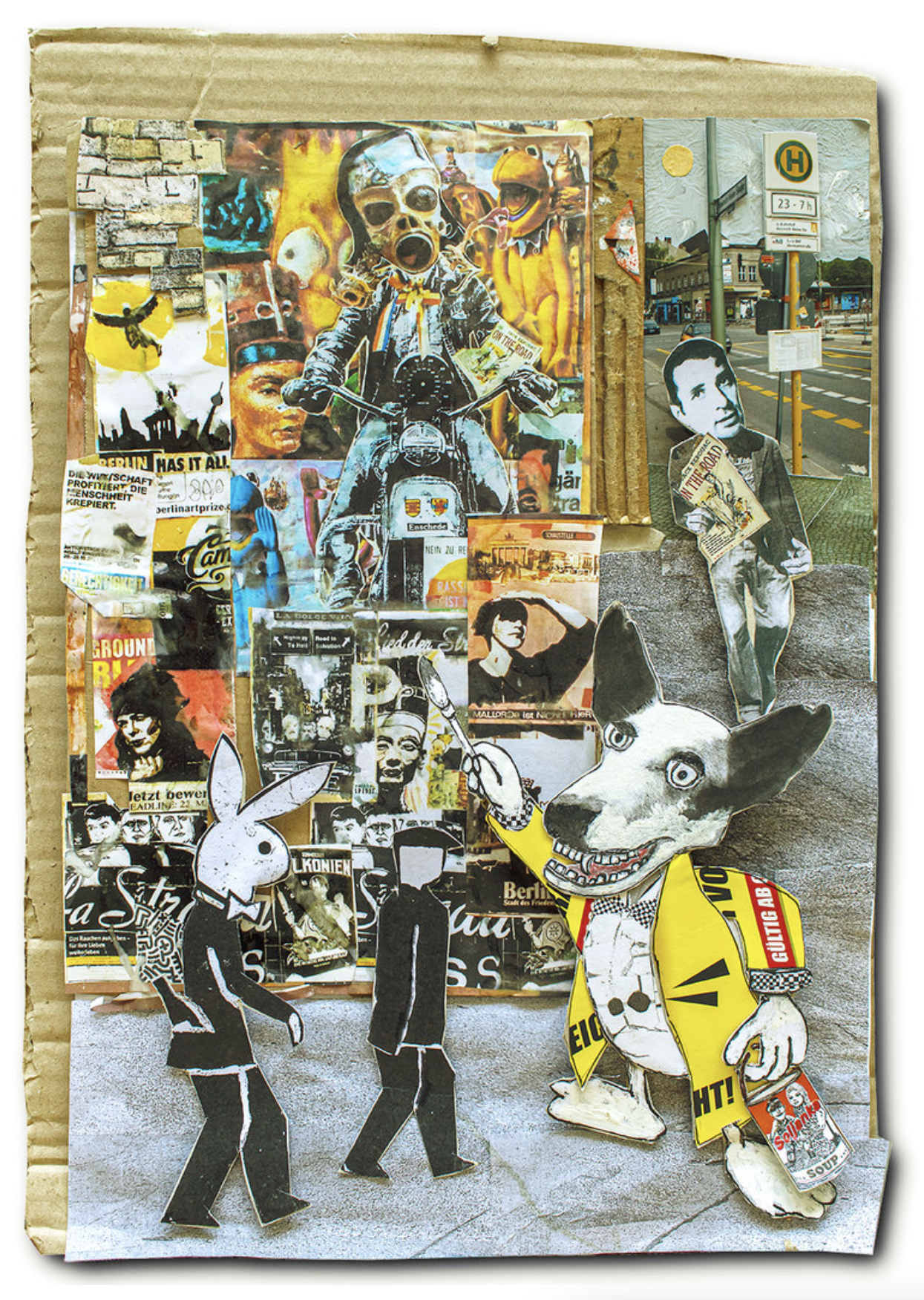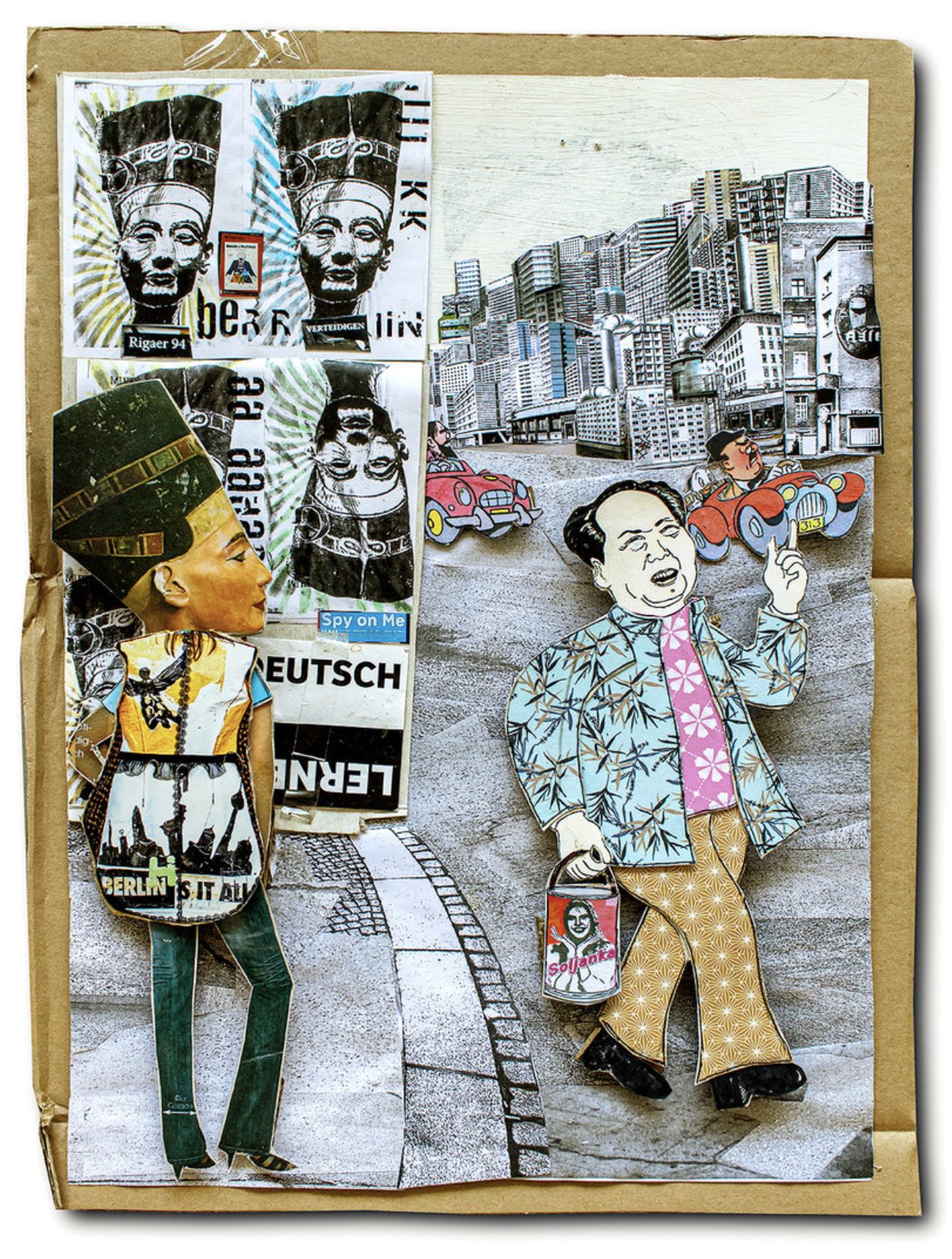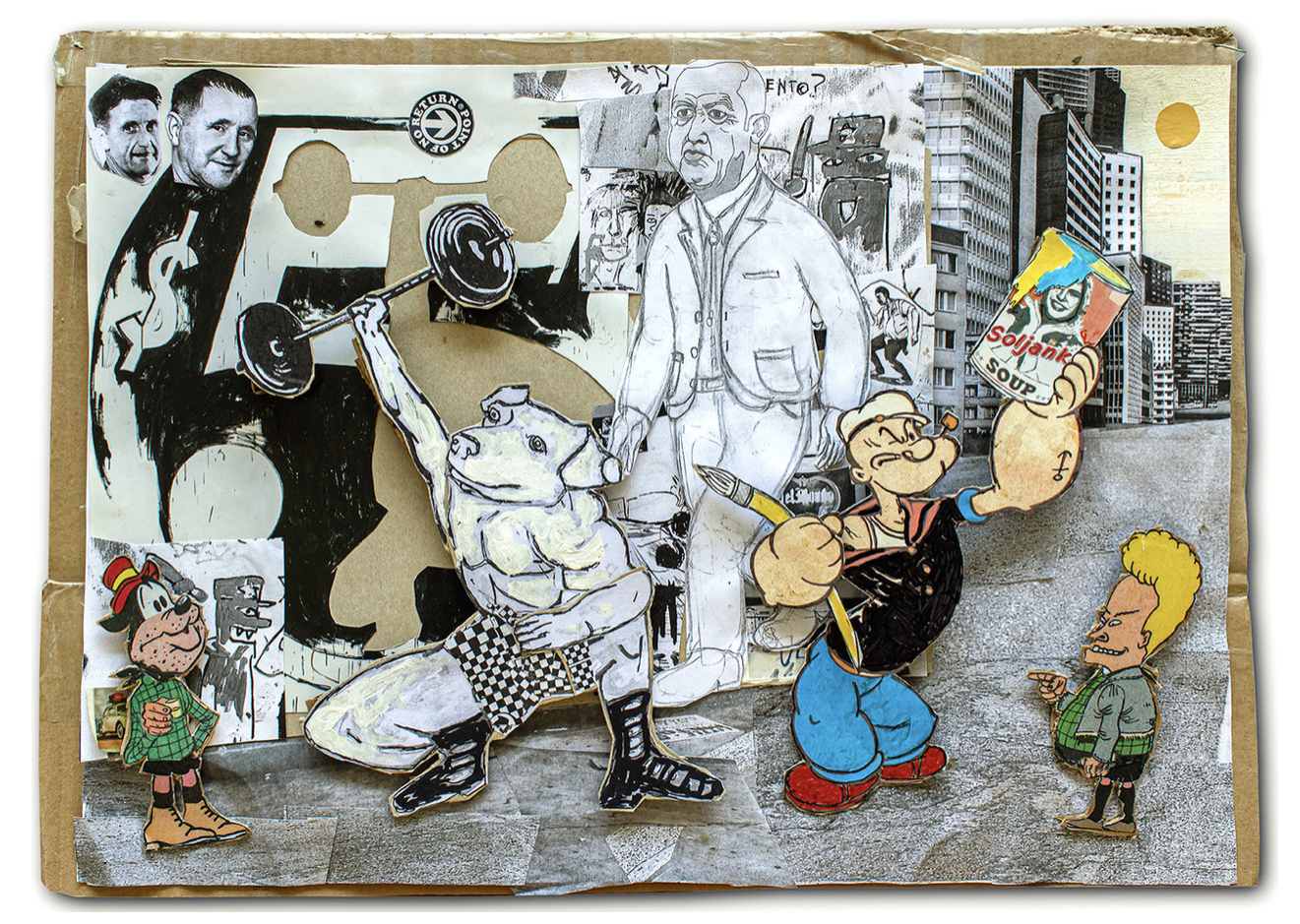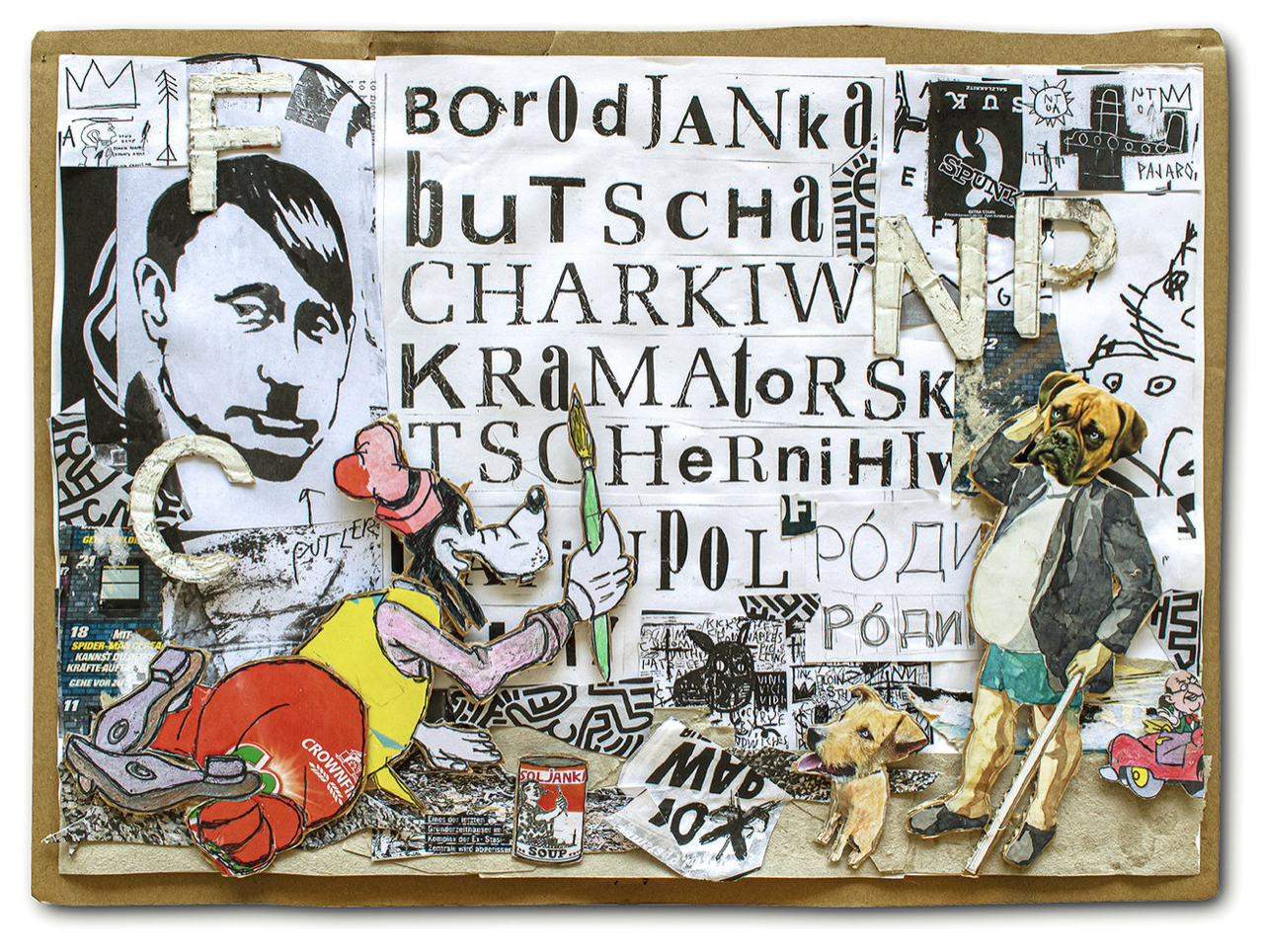PUTIN'S WAR, SATIR AND OUTSIDER PROPAGANDA
We met Tim Roeloffs in '99. We were going to Copenhagen for a festival and we dedicated a stop on our Inter-rail to Berlin. At the time there was no internet and cell phones were in their infancy. We didn't book anywhere such was the trust we placed in fate, but that time it went badly and we had to settle for a campsite forty minutes by bus from the city centre. The second day we were there some friends told us that we had to go to Orianenburger Strasse because there was a squat to visit and so we arrived at the Tacheles, a partially ruined building, huge, full of people, occupied by artists who lived there, with tourists coming and going, walls full of graffiti and a great energy in the air.
Exploring the structure, on one of the upper floors, we found ourselves in an artist's studio. On the right, next to a window, sitting at a small desk was a man silently cutting photographs in the sun. Around him are his works, all photographic collages. He didn't say anything. I bought two for fifteen marks: “Berlin-Mitte II” and “Dimitroff Strasse”.
After almost twenty years, with Antonio, one of our travel companions, looking at them, we asked ourselves what had become of that man, we deciphered his signature and searched for the name Roeloffs on Google. Then I wrote to him, we met and became friends. Miracles of the internet.
His technique is unique. He photographs buildings, cuts out buildings, characters, objects, then superimposes the cuttings to compose what he calls "posters": he reconstructs streets and composes funny scenes, with actors taken from real life, absolutely decontextualized protagonists of modern history, former communist leaders on the street in the car, sitting at a bar table in the company of Tim's dog, hugging on the stage of a cabaret.
He imagines a story and tells it through a combination of self-produced images, fusing together propaganda slogans, street art, icons of the recent past and satire.
He is fully included by the most accredited international press among the exponents of Outsider art, an expression which refers to the spontaneous artistic production of innate talents, foreign to the world of artistic training and conventional art.
Impetuous artists.
Below is an interview with Tim Roeloffs published in issue 118 of Raw Vision magazine (www.rawvision.com) signed by journalist Jeffrey Wolf.
“My mind is not made for computer thinking, I must be in total control of the whole process. This is why I neither drive a car or fly. I like to bicycle and take trains. I want to smell, hear and see my trip. I use only scissors, cutters and glue, this is my computer” says Tim Roeloffs.
The beliefs that the self-taught artist lives by have remained constant over the last 20 years. He was born Timotheus Paulus Roeloffs in Holland, in 1965. His family had lived on the same farm for hundreds of years but ended up working in textile factories for poorwages.
His grandfather, who loved to drink beer and spend days in bars playing poker, won a printing machine, changing the family's luck. It is an apt legacy, as part of Roeloffs art now involves making posters and silkscreens of his work.
For ten years, Roeloffs lived and worked abroad – Spain, Portugal, Turkey, Egypt and Switzerland – teaching tennis, always photographing his environs. Then an illustrator friend convinced him to stop tennis coaching and to sell his photographs.
Tired of teaching backhands in the hot sun for hours on end, Roeloffs was primed for change. He often travelled to Berlin and other Eastern Bloc countries during the Cold War period from1983 to 1989, and was inspired by the “Stalinist Disney World” he had experienced. When the wall fell in 1989, he visited Berlin again and was excited by the way art seemed to be happening everywhere. By 1992, he had moved there, exploring photography techniques - using his bath as a darkroom - and visiting the illegal underground bars in former East Berlin. This is how he heard of an art house squat called Tacheles (Yiddish for "straight talking") in a building that had been a 1900s department store, taken over and used by the Nazis, and then partially demolished by the GDR. It was occupied by people from all over the world. Open round the clock, with art studios, a sculpture garden, movie theatre, bar and concert venue. Tacheles was famous as a tourist attraction and a symbol of post - reunification and Berlin's heady underground culture. “Tacheles was a very interesting social experiment.
The inhabitants carried the ideals and lessons from this space in their hearts and minds. Tacheles was an initiator for the whole art scene in Berlin. Artists came and went. It was a microcosm of the creative world, a playground and a lifestyle experiment” says Roeloffs.
He bought into the concept completely and the squat became his shelter.
Every day he rode his bike al over Berlin, documenting the street art in the East.
However, he found it frustrating that the images he saw did not add up to what he wanted to relate. For instance, he would spot a great piece of wall art - on an uninteresting building; or a Trabant car from former East Germany on the street - but not in front of a striking graffiti wall. This is when Roeloffs' photographs started to morph into what he calls “photomontage”, using scissors, cutters and glue to create his motifs.
He explains: “The only art what interests me is how people interpret the times in which they lived”. His process came out of the stories he wanted to tell. It was also a way for him to express the irony, satire and humour that he relished, and to send up political figures and former communist leaders.
Initially, Roeloffs' work only used black-and-white photography, but over the decades it has evolved to include colour and layer upon layer until today his work consists of up to 30 layers of collage. He started making his own adverts, for example, for soup, beer and the Berlin Marlborough Man. Then, in 2009, scouts for fashion company Versace discovered Roeloffs' work. They felt it was an authentic depiction of Berlin and perfect for a special fashion line they were developing to honour founder Gianni Versace, a big fan of Berlin. Roeloffs says: “I know nothing about fashion... Raw is my art, and the smell of piss and puke is ingrained deep into my art. It was strange to see models walking in clothes with my designs....I didn't know how they planned to put photo-montage art onto clothing. They did it very well and still maintained the dimensionality that's in my work."
In 2013, the remaining artists living in Tacheles, Roeloffs included, were evicted. The iconic squat had lasted for 22 years. Bids to get it recognised by museums and galleries had failed. Property developers had their on eye it but the city promised to keep it as a cultural site. "The building itself became the best art piece in Tacheles. Every day new art, sayings, drawings on the walls and toilets documented the folks that passed through at one point or the other," says Roeloffs.
Tacheles had been Roeloffs 'backbone, a reason to make art or to be in Berlin or to be alive for that matter. A few Tacheles artists committed suicide, a few began to drink heavily. Roeloffs started Gallery Klassenfeind (Class Enemy) with a friend who had a space close to the squat. It was not a gallery to show solo work but to continue the idea of "art as a state of mind" Roeloffs then began another project, Kultur Botschaft Lichtenberg (Culture Embassy Lichtenberg) in a three-storey building, with the
idea of sharing the space with 20 artists. After 16 months of preparation, the city's planning department blocked the project. It seemed that the creative image that the squatting artists gave to Berlin was no longer needed. The era of the 1990s was over.
A few years ago, another friend of Roeloffs stepped forward with a space - an old East German café called Bar 23. The pair forged a partnership called Bluhende Landschaften Berlin. Translated as "blooming landscapes", it is a slogan that was coined in 1990 by the the German Chancellor Helmut Kohl to describe an economic future perspective for the new federal states. Roeloffs has been quoting the slogan since the 1990s. With his work, he wanted to make the world more colourful or at least not greyer.
The gallery walls are full of tags, drawings and slogans. It tells the story of the city that Roeloffs loves so much. He feels living in Berlin is "paradise in comparison to the rest of the world. He says: “On our TV screens we see all the misery in2001. I saw the terrorists flying into the Twin Towers. We saw the death and destruction Covid brought to others, Putin's war in Ukraine, the Trumpers storming the Capitol. Big Brother is watching. Some people write books about it. I try to make art about it. Turn the negative into positive so you can live with it. I would like to explain the whole situation in a painting, but I can't draw so I do my montages. I'm inspired by graffiti I see on the walls of Berlin. I make art about these things to inspire."
When asked what he is responding to, he answers: Who are the heroes and who are the terrorists. The borders between the people of the world are not between the people. It's Upstairs, Downstairs.
He continues: "Life is great, what a privilege that I can make art in a free country. I can piss on my government, the Pope in Rome, but I need to be careful of the radical faction over here. That bothers me a lot. There is always a hair in da soup."



